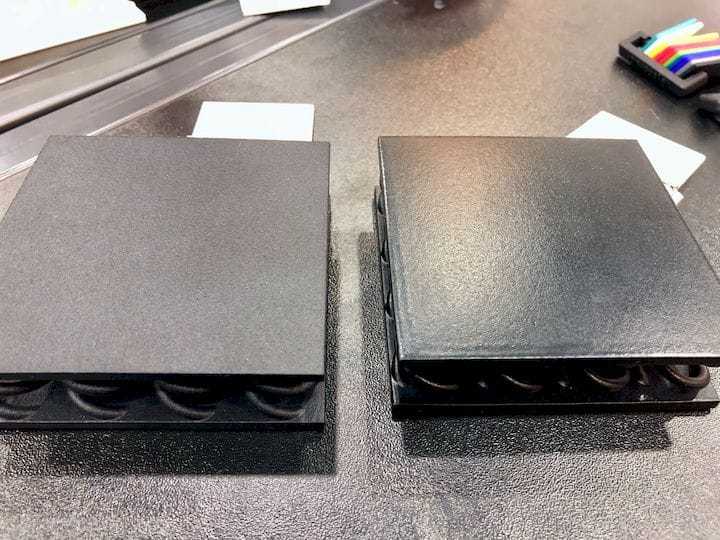![Dye Mansion’s new VaporFuse system smoothed the 3D print at right [Source: Fabbaloo]](https://fabbaloo.com/wp-content/uploads/2020/05/image-asset_img_5eb0966355784.jpg)
Dye Mansion continues to develop a new 3D print smoothing solution.
The Munich-based company started years ago by providing dyes for SLS prints. If you’re wondering why that’s a thing, it has to do with production. If you are producing many objects, the dyeing process must result in very consistent product coloring. This is a tricky business, and Dye Mansion began with that expertise.
But dyeing is only one of several post-processing activities commonly found with 3D prints. As such, it seems that the company has added several additional post-processing capabilities to their product line. Their mantra these days is a three-step process for prints: Support Removal, Smoothing and Coloration.
![Dye Mansion’s Powershot S smoothing system [Source: Fabbaloo]](https://fabbaloo.com/wp-content/uploads/2020/05/image-asset_img_5eb09663aefd1.jpg)
They provide solutions for each of these activities. The Powershot C cleans prints by removing support material. The Powershot S surfaces prints through a unique process they call “PolyShot Surfacing”, in which parts are blasted with a specialized media to smooth the surface. Finally, they also offer the DM60, a quality-oriented dyeing system that provides highly consistent colorations from batch to batch.
Now the company continues to develop a new type of smoothing solution they call “VaporFuse”, which we reported on last fall.
Injection Molding Surface Quality
Evidently their clients were asking for even better surface finishes, even comparable to those obtained with injection molding. That’s a very tall order to fill, but it seems that Dye Mansion has produced a system that can get very close to that level of quality.
The VaporFuse system, as you might guess, does not rely on any mechanical process as their Powershot S does. Instead, VaporFuse relies on a new chemical process in which the parts are exposed to a vapor. The vapor just slightly melts the surface, causing a smoothing effect.
This is actually quite a desirable development, as the increasingly complex geometries produced by designers sometimes do not work well with a mechanical smoother: the media blast flow cannot reach all areas of the print. Thus a vapor system is more powerful as the vapor can easily creep into all the nooks and crannies of a complex print.
![Close detail of smoothing effect by the new Dye Mansion VaporFuse system [Source: Fabbaloo]](https://fabbaloo.com/wp-content/uploads/2020/05/image-asset_img_5eb096641891e.jpg)
Dye Mansion says the new VaporFuse system will work with many common 3D printing materials, including nylons, TPU and others. This is quite interesting, as the only other vapor-oriented smoothing processes we’re aware of are the DIY acetone technique for ABS, Polymaker’s alcohol-based PolySmooth system, and Stratasys’ Smoothing Station, also for ABS only.
We’re often asked how to chemically smooth PLA, and this turns out to be effectively impossible, as the chemical required to do so, Tetrahydrofuran, is toxic and requires very careful handling. It should be used only by trained professionals.
Thus it is surprising — and delightful — that Dye Mansion has developed a chemical that can handle multiple material types within one system.
Smoothing ULTEM 3D Prints
However, they explain that smoothing ULTEM, a very strong and high-temperature material, would require a different chemical yet to be developed. It would seem then that the VaporFuse system will be able to use more than one chemical vapor.
Dye Mansion has not yet released the VaporFuse system, but it appears they are still tweaking the development. Currently they are accepting parts from beta clients for smoothing services using VaporFuse at their lab. This permits them to perform tests on actual customer prints and directly inspect the results. I suspect they’ll use this data to finalize the parameter tuning on the system before it’s released.
It’s expected they will release the final VaporFuse product this fall at formnext.
We will definitely want to see this product, as the results are pretty impressive.
Via Dye Mansion











